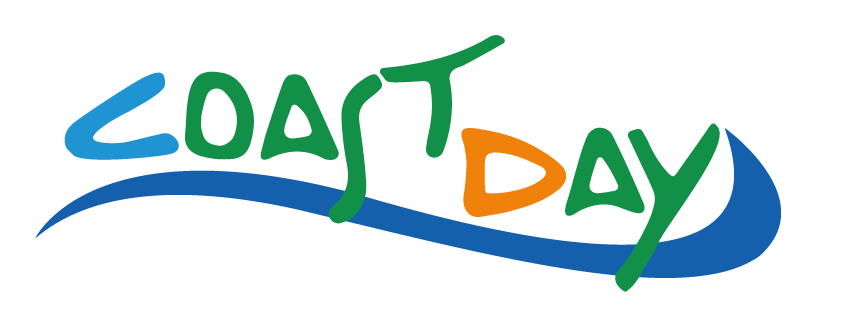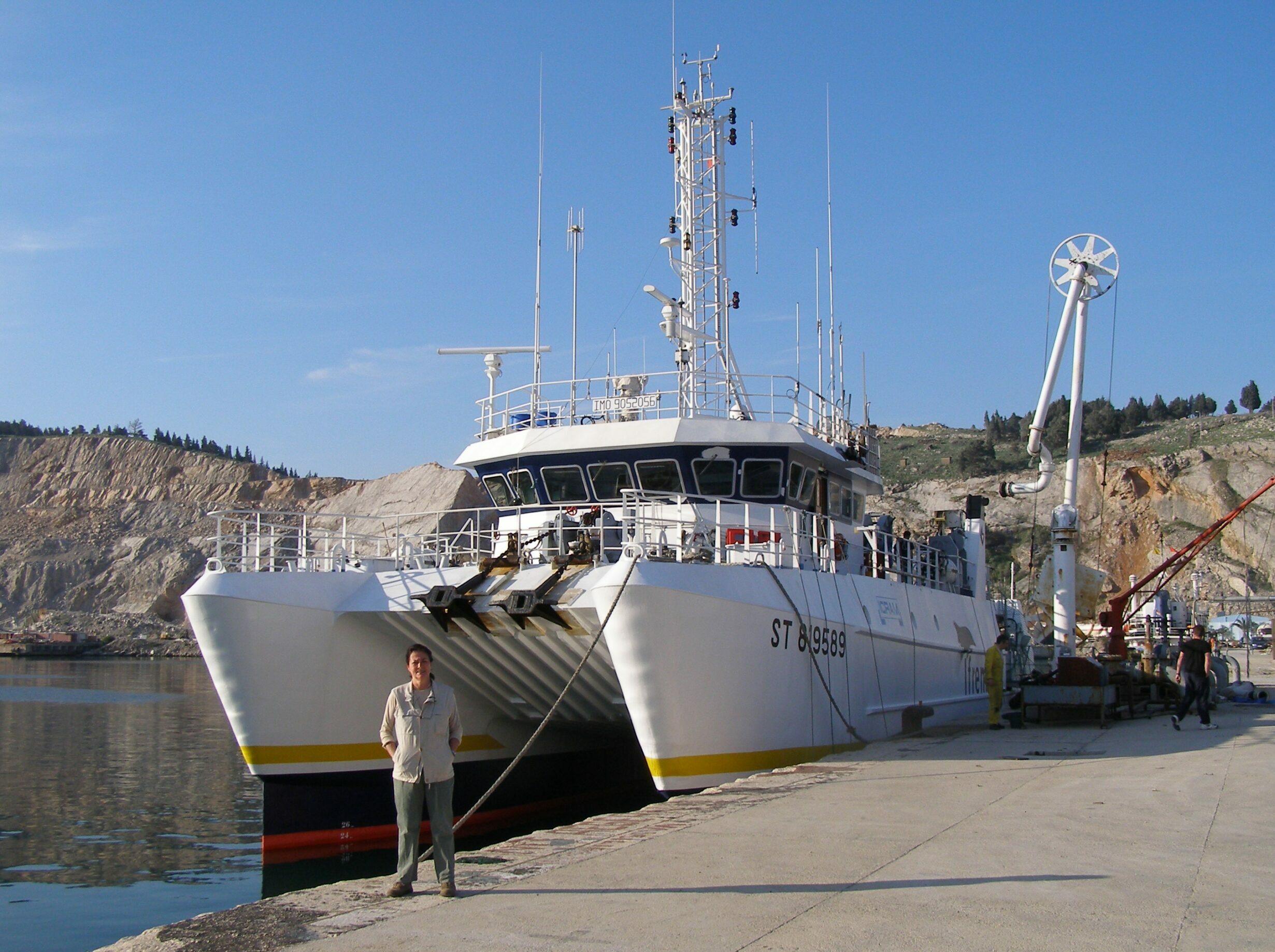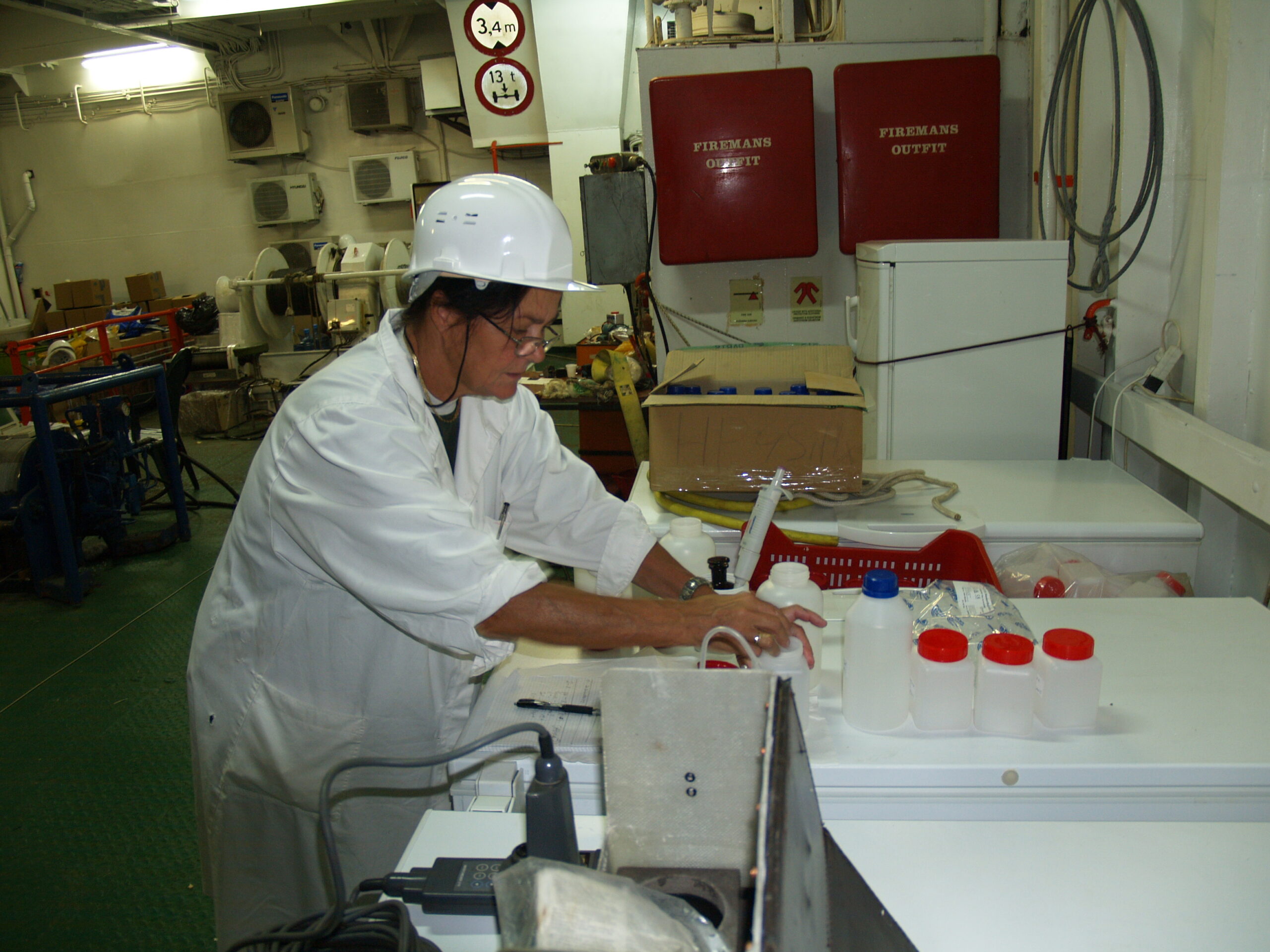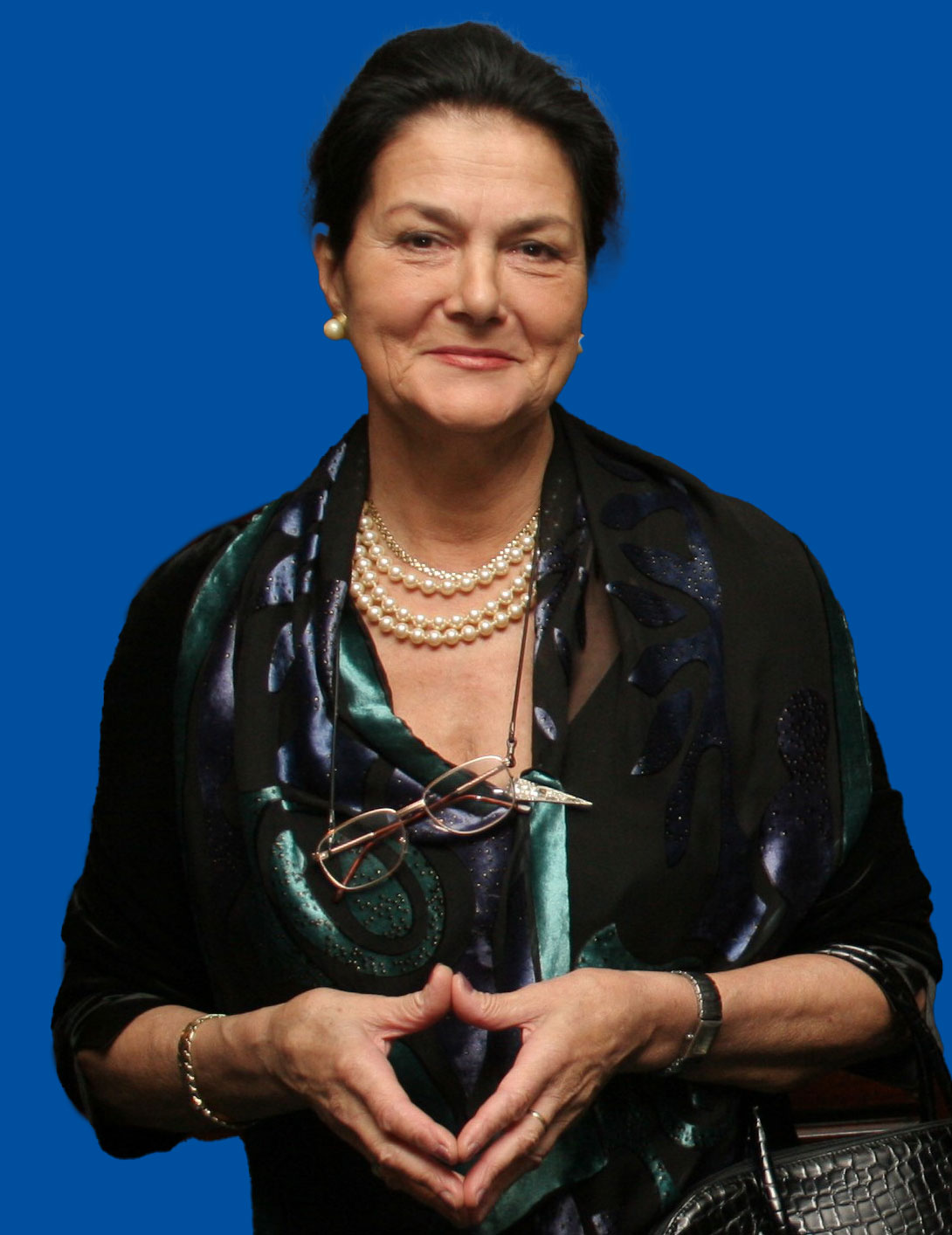
“Raising environmental awareness is key”
In conversation with Ana Mišurović
Just by listening to the sound of her voice, you can already tell that Ana is a woman who takes a strong stance. Determined and brave, this physical chemist and former top volleyball player was never afraid of a challenge – not even during risky field trials in the Adriatic, which she recalls with a degree of nostalgia: “It was a great honour for me to have the opportunity to be a member of the first team to take samples from the most remote point of the Adriatic. I will never forget the first time I set my eyes on the lighthouse on the little pelagic island of Palagruža. That vision is something that has remained in my heart.”
Appointed as Montenegro’s first female Minister of the Environment in 1994 – indeed, as Montenegro’s first female minister of any kind – she was breaking new ground at a time when the slogan ‘ecological state’ 1 pointed the way to a better tomorrow. All in all, Ana has had an impressive career, which culminated with the founding of the Centre for Ecotoxicological Research in Podgorica, Montenegro. Although she is now retired, she has remained a hugely influential figure in the field of environmental protection in Montenegro.
1 Following the Žabljak Parliamentary Declaration in 1991, Montenegro committed to high standards of environmental protection and sustainable development, making it the first nation in the world to declare itself an “ecological state”.
The challenges of reducing pollution
“Tourism is the main issue in Montenegro and the broader Mediterranean region,” Ana says, without a shred of doubt, when asked about the significant changes taking place along the Mediterranean coastline. “In Budva, the popular beach town, the population increases by 3 to 5 times in the summer, with more tourists than residents. This overwhelming influx significantly impacts daily life in the area, especially concerning sewage outlets. Most settlements along the Montenegrin coast are not connected to the sewage system. As a result, untreated wastewater contributes to the eutrophication of coastal waters, particularly in Boka Kotorska. Moreover, the expanding cruising and yachting tourism industry further exacerbates sea contamination, primarily due to the discharge of petroleum hydrocarbons (PH) 2 into the marine ecosystem. The closed and delicate system of Boka Kotorska Bay, unique for its many underground sweet springs, is extremely vulnerable as several big cruise ships can arrive at the same time and cause extensive damage to marine life.”
However, Ana highlights that reducing pollution is challenging because most locals depend on tourism for their livelihoods. “The fact that decision-makers build tourism facilities without thinking about waste and its treatment reflects the low level of environmental awareness among the population,” she says. “Despite efforts to declare Montenegro an ‘ecological state’ and implement coastal management projects, tangible results have been elusive. Given Montenegro’s size and the variety of tourist activities it offers, urgent measures are necessary to alleviate the mounting pressure on coastal and marine ecosystems.”
2 Petroleum Hydrocarbons are a large class of chemicals made up of carbon and hydrogen that are the primary compounds found in common fuels such as kerosene, gasoline, diesel, motor oil, and different jet fuels.
Finding permanent and efficient solutions
Protecting our environment from pollution is a top priority within the current UNEP action programme, which requires effective strategies and concrete actions. With that in mind, Ana tells us that it’s crucial to ensure that all coastal and inland facilities are connected to sewage systems with effective water treatment and purification. In addition, relocating roads away from the coast would help to reduce the pollution that’s being caused by heavy traffic.
She continues: “In Montenegro, implementing coastal monitoring and assessment programmes is essential for achieving Good Environmental Status (GES), focusing on addressing eutrophication, pollution, and marine litter as key ecological objectives. For instance, the tests we conducted at the mouth of the Bojana river revealed alarming levels of pollutants flowing into the sea, contaminating the northern part of Albania and the entire coast up to the port of Bar. If we consider the impact of bulk cargo at sea, this area emerges as the most polluted in the Adriatic.”
With that point in mind, Ana states: “We must find a permanent and efficient waste management solution to tackle these issues. During my time as minister, I continuously stressed the importance of strict penalties to encourage responsible behaviour. Without these measures, I doubt we’ll see significant improvements.” She recalls her final days in the office when the Environmental Protection Law was introduced, ensuring full compliance with the EU Directive. “Our proposal, which was passed successfully, included setting up a central incinerator in Podgorica for mixed waste to extract secondary raw materials, and a separate plant to process biodegradable waste into organic fertilizer. However, after I left office, amendments were made to opt for sanitary landfills and remove fines for illegal waste disposal.”
“The Montenegrin Centre for Ecotoxicological Research is my third child”
When questioned about her most significant challenges and the most fulfilling aspects of her career, Ana is quick to emphasize the latter. As she says, “The establishment of the Centre for Ecotoxicological Research of Montenegro – CETI – represents the greatest reward for me. In a way, I view it as my third child. As one of the leading institutions for testing the quality of water, sea, air pollution, and radioactive contamination of the environment and biological material, the Centre has played a significant role in numerous international projects related to the marine environment, such as the Adricosm – Star and many others. I’m especially proud that the director of the International Atomic Energy Agency attended CETI’s tenth anniversary. Alongside implementing the Montenegrin monitoring programme for the marine environment, CETI conducted testing for the construction of several sites, including the Porto Montenegro complex in Tivat or Luštica Bay.

However, if you ask Ana which project she considers to be the most successful, she has a clear favourite: “For me it was the CAMP Montenegro, which was co-funded through the GEF MEDPartnership project carried out with PAP/RAC, which stands as the most comprehensive project of its kind to be undertaken along the entire Adriatic coast. Through the preparation of the ICZM Strategy for Montenegro, we created all possible base maps, pollution maps and recommendations for future steps to mitigate key issues.”

Sport spirit
During her 50 years of work, Ana tells us that she never faced any issues as a woman and never felt inferior, even during her tenure as a minister. “Maybe it’s because I never considered myself to be any less capable than my male colleagues,” she says, and adds that her confidence probably comes from her long experience as an athlete. “I was a volleyball player at the Crvena Zvezda volleyball club, where I learned to work just as hard as my male counterparts.”
During her studies in physical chemistry, Ana was part of a group with a roughly equal number of male and female students. At that time, those who excelled in knowledge and skill, and had the ambition to push further, progressed rapidly: “This thriving environment and my expertise led to my appointment as Montenegro’s Minister of the Environment. I’ve been fortunate to work with colleagues at various institutions who treated me as an equal. It felt like we were all part of the same family.”
The woman who inspires Ana in her work on sustainable coastal development?
Professor Nadia Pinardi
Nadia Pinardi, a Professor of Oceanography at the Department of Physics and Astronomy at the University of Bologna, Italy, is an expert in ocean numerical modelling, forecasting, and data assimilation for the marine environment. Since the mid-1990s, she has coordinated the development and implementation of operational oceanography in the Mediterranean Sea.
“I had the privilege of collaborating with her on various international projects, including the Adricosm project, which she managed remarkably,” Ana recalls. “She acted as a mentor to me. This experience was truly invaluable, marking my first opportunity to engage with so many institutions. Working closely with her left a lasting impression, as it was my first experience of collaborating on such a large international project with someone who had the ability to effectively share their knowledge and motivate others.”
Remembering her own early career, Ana has some advice for women interested in working on environmental issues in the Mediterranean: “First and foremost, you must have a deep passion for the marine environment and be ready to handle any challenges that come your way during field trials at sea. Fear of sitting in a boat during rough seas or hesitation to dive deep to collect sediment samples just won’t do. True dedication, fearlessness, and love for your work are essential.”
Reimagining the Mediterranean coasts
Given the increasing pressures of coastal urbanisation and the resulting rise in pollution, Ana is deeply concerned about the future of the Mediterranean. She believes that effectively managing these issues in line with established agreements and conventions can only be achieved through the strict control of activities that threaten the marine environment. “I hope that environmental awareness will grow and we will succeed in preserving the coastal and marine areas for future generations,” she says. “The world relies on the young. Unfortunately, our country lacks educational media content that sheds light on the global impact of pollution, its sources, preventive measures, and ways to protect the sea, including regional initiatives to get people to think about these crucial issues. We need to launch public awareness campaigns and bring in experts to educate the public on the threats to our coast and our ocean.”
Ultimately though, Ana remains full of hope for the future: “The declaration that Montenegro was an ecological country was a fantastic idea that was widely accepted. It wasn’t just an idea that three or four people forced through, it was a shared passion which we should rediscover as a nation. Although challenges remain, I’m optimistic that things will soon change for the better in Montenegro and the entire Mediterranean.”
PAP/RAC has developed the Coastal Management Plan for Boka Kotorska Bay as part of its recent work in Montenegro. This important achievement reflects the collaborative efforts of the Global Environment Facility (GEF), PAP/RAC, and the Government of Montenegro under the MedProgramme’s Child Project 2.1.
Written by Tea Marasović for PAP/RAC in the framework of the GEF MedProgramme & UNEP/MAP celebration of Coast Day 2024

